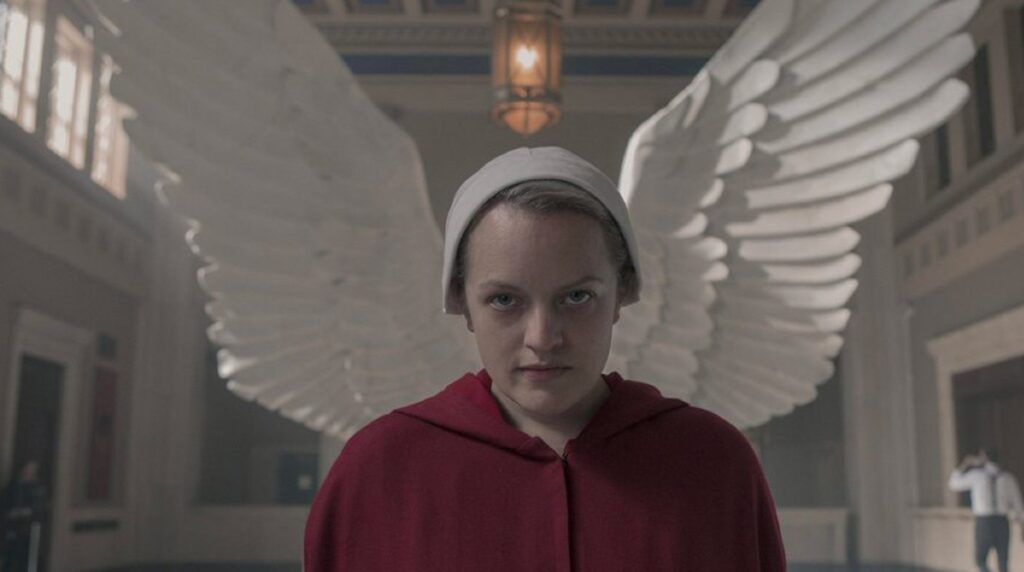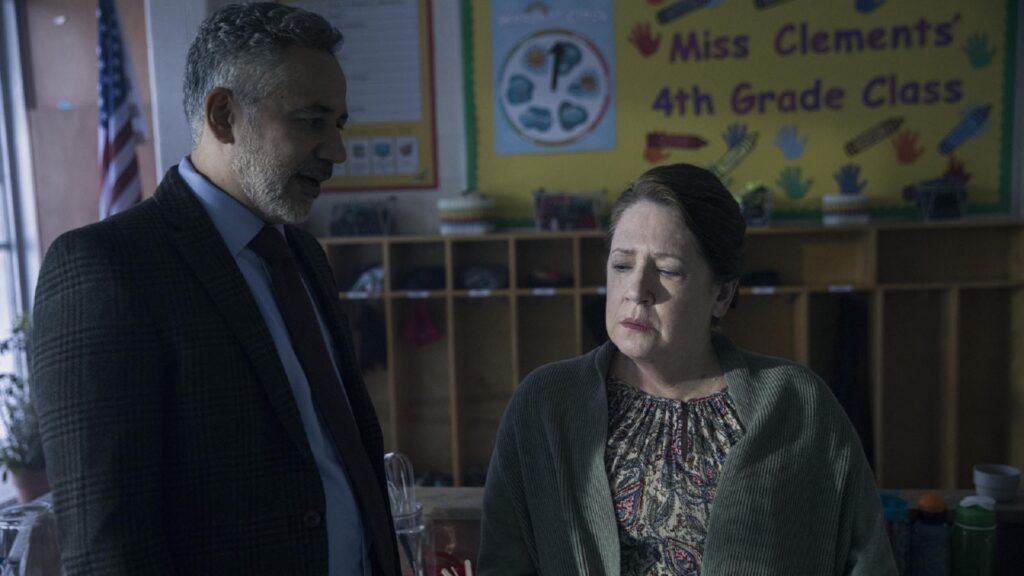The red capes and white headpieces return on September 15 for a fifth season, still at Gilead. But can The Handmaid’s Tale still surprise us and regain its luster? Here is what we expect from these new episodes, after four largely lackluster seasons.
How to subscribe to OCS
You have to go to the platform’s home page or go through Amazon or Molotov. The subscription starts at €10.99/month.
The Handmaid’s Tale, adapted from the novel by Margaret Atwood, should have largely stopped after its triumphant first season, in 2017. It would then have remained a monument of pop culture, iconic for its costumes and revolutionary for its inspiring feminist positioning. Only here: the series continued, for three long seasons, all more unequal than the other. The Handmaid’s Tale was thus entangled in an aesthetic of ambivalent violence and a sometimes confused subject, despite excellent staging ideas.
Five years after its sensational debut on television, the series has just been renewed for a final sixth season and an adaptation of Wills, the latest novel by Margaret Atwood, is even in the works. Then Scarlet Servant could it manage to climb the slope and renew itself, for its penultimate season, broadcast from September 15 on OCS? To save his skin and find his flame of yesteryear, The Handmaid’s Tale should in any case follow these five recommendations.
Attention, spoilers in the rest of this article on the first four seasons of The Handmaid’s Tale.
A Handmaid’s Tale with less June
This is now part of the identity of the series: each episode gives us dozens of close-ups on the head of June, played by Elisabeth Moss. Of course, the actress madmen is always great, but we really start to get tired of these redundant portraits, supposed to emphasize the growing rage of the character. So please, give us fewer close-ups and above all fewer narrative arcs around this anti-heroine, which is, of course, central, but which above all becomes more and more toxic over the seasons.

June is so hateful that the message of The Handmaid’s Tale gets lost a little more with each new episode, especially in season 4, in which she forces Emily to confront one of her torturers. The show is supposed to be feminist but features such a problematic character, that her fights end up feeling almost unfair to even the most gender-aware minds. And we’re not even talking about the fact that June ends up deliberately staying or returning to Gilead each season: if she persists in this way in the new episodes, we definitely pack up.
Please, no more credibility
Precisely, let’s talk about these round trips to Gilead: over the episodes, it seems that the creator of the series, Bruce Miller, left the credibility in the closet. Seasons 3 and 4 are particularly good on this subject. While June is the greatest threat to this dystopian dictatorship, it is still the women around them who are abused, threatened, executed, circumcised or amputated. June, she has regularly remained unscathed. The main character of the series is far too spared for this to be believable.
And the final season was not getting any better, the worst probably being this story of resistant women, still stuck in Gilead, whose freedom was traded by June against that of Fred Waterford. The anti-heroine has been bothering us for seasons with her daughter Hannah, whom she’s dying to find, but she doesn’t even think of including her in the exchange? And what about Janine? June however now knows that her friend is alive, but has again been captured by Gilead… In short, nothing is right, and the first images of season 5 do not seem to improve the likelihood of the series.
More respect for his characters
The Handmaid’s Tale has always offered a gallery of complex female characters of great diversity. From Aunt Lydia to Serena to Emily, women are in the spotlight with their flaws and weaknesses. But by dint of focusing solely on the fate of June, the series sometimes forgets this group ultimately much more interesting than the main protagonist, frankly painful.

The Handmaid’s Tale even ransacked many story arcs, like Aunt Lydia’s, explaining her commitment to Gilead by the simple romantic rejection of a man around her. The character, as sadistic as he is empathetic, would clearly have deserved better than a origin story dubious, sloppy in one episode. Other survivors of Gilead hell like Moira or Emily also remain far too much in the shadow of June, the eternal savior, and that’s a shame.
Less aestheticized violence
From its inception, the series has been hailed for its stark portrayal of violence against women, shown for once from a female perspective. But after the first season, The Handmaid’s Tale has ended up wallowing in endless sequences, more intended to perpetuate decades of wanton patriarchal violence on screen, than to actually denounce it. Obviously, the series has the significant advantage of forcing us to look the truth in the face, as millions of women experience it every day, without looking away.

But this brutality is so often shown in an aesthetic way, that we don’t really know if The Handmaid’s Tale is a committed or simply voyeuristic work. The series has even been at the heart of feminist debates for its “torture porn”, a form of horror cinema that highlights gratuitous sadism geared towards women. Thus, hardly an episode goes by without a scene of sexual violence, hanging or psychological torture being shown on the screen, and it ends up being painful. We know it, however: the series is capable of magnificent sequences, equipped with a superb soundtrack. Episode 3 of season 4, which ended with a traumatic train scene, proved it brilliantly by using a lot of off-screen, more than frontal violence. So give us less gore and shocking scenes and more feminist talk.
More parallels with our reality
Speaking of engaging storytelling, The Handmaid’s Tale has consistently been cited as one of the best feminist series of recent years. And it is true that it arrived at the right time, in 2017, only a few months after the election of Donald Trump in the United States. Many feminist activists then seized on the subject of the series to parade in the streets, dressed in the emblematic costume of the scarlet servants. And the series offered us its share of powerful monologues, whose parallels with our reality gave chills to the spine.
But in 2022, the landmark Roe v. Wade, who enshrined abortion in the US Constitution, was struck down by the Supreme Court, and the The Handmaid’s Tale becomes even more political. The red suits were also brought out by American demonstrators, in June, to face the “pro-life” who refuse the right to abortion. The parallels between fiction and reality are increasingly terrifying, since in Gilead, the servants are condemned to give birth, without having the choice. For its fifth season, we would like the series to take a clear position on this major subject of women’s rights. Especially since the last episodes offered really unhealthy innuendos around motherhood and what constituted or did not constitute a good mother. June, we’re waiting for you around the corner.
Some links in this article are affiliate. We’ll explaine everything here.

